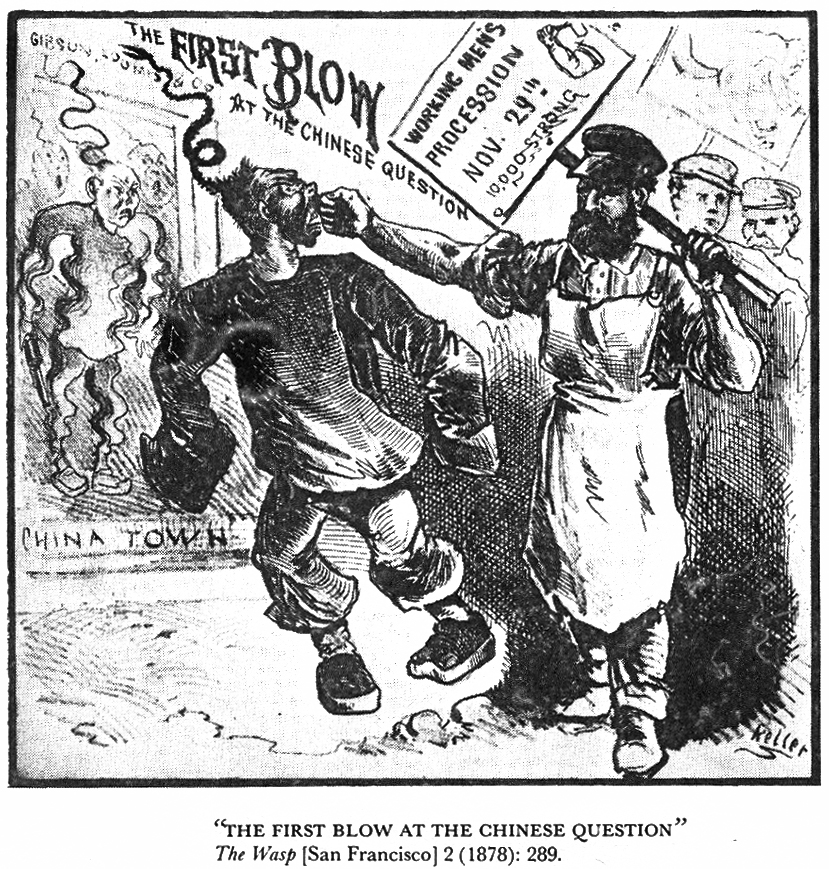I recently went through the Journal of Ethnic American History’s 1999 forum on the state of the immigration history field. I was pleased to see Jon Gjerde mention Madeline Hsu’s dissertation as an example of the kind of work that must be done using transnational perspectives. He writes,
And historians of the Chinese diaspora, such as Sucheng Chan and Madeleine Hsu, have illustrated the centrality of centuries old migration patterns that eventually reached the United States in the mid-nineteenth century. But there is occasion for additional work of this kind. We have been shown, for example, that we cannot understand the Chinese diaspora without coming to terms with the centuries old migration pattern that linked the Chinese littoral to settlement communities throughout Asia. We would profit from more work on transnational institutions: How much better could we understand the significance of the Chinese American merchant community in San Francisco if we connected it to commercial organization in Shanghai or Canton?” (Gjerde, 52-53).
Guangzhou is the city formerly known as Canton that Gjerde suggests offers greater insight into the significance of the Chinese American community. And interestingly enough, Hsu’s book that emerged out of the dissertation Gjerde cited examines this subject in great detail, among other matters in the transnational Chinese migrant experience.
When surveying Gjerde’s essay, Donna Gabaccia recognizes the importance of the “Turnerian historians” he speaks of, the students of Frederick Jackson Turner who studied immigration on the American frontier by drawing connections between the migrants European homelands and their new homes. Gjerde views them as early transnational historians but laments that most modern students of migration turn to other fields (sociology in the work of Robin Cohen, anthropology with Nina Glick-Schiller or Arjun Appadurai, post-colonial theory in the work of Homi K. Bhabha, the cultural studies of Stuart Hall, etc.) (131-132). Gabaccia doesn’t find this to be as much a problem as Gjerde, as she thinks it is important to work across disciplinary lines.
Erika Lee’s essay emphasizes the importance of immigration law in the field. Commenting on her essay, Rudolph Vecoli writes, “Although Lee delineates how certain groups, Chinese, Filipinos, Mexicans, Jews, and women, were affected by particular provisions of immigration and naturalization laws, I would have liked more attention paid to another immigrant population which was specifically targeted by enforcement agencies: alleged subversives (terrorists in current parlance).” He then notes that the millions of Muslims who have immigrated to the US in recent years offer an example of a people who are often judged “based on their presumed Islamic faith” and “their Arabness.” I was surprised that he just bulks Arabs under the category of Muslims, since a majority of Arab immigrants are Christian. And Vecoli ignores Pakistani and Indian Muslim immigrants, who form a significant portion of American immigrants. He notes that the group of Arab Muslims is still subjected to old questions asking whether they will assimilate to the “white side” of the racial divide or “contribute to what has been termed ‘the browning of America’?” Just from reading Vecoli’s few comments about these groups of people, I can see that there is a lot more work to be done in my own field as I research the Arab American diaspora as it relates to race and nationalism.
These questions that many immigrants are subjected to relate to the essay by George Sanchez titled “Race, Nation, and Culture in Recent Immigration Studies.” Unlike Gjerde’s insistence that the field can rely on the work of immigration historians to prosper, Sanchez argues that immigration history must interact closely with other fields to study race, culture, and nation. Now that it has been fourteen years since the publication of this forum, it is clear that immigration historians are increasingly comfortable with interdisciplinary approaches as they attempt to write transnational histories. I see Hsu’s book as an outgrowth of the discussions in this forum.
Forum in the Journal Of American Ethnic History 18, no. 4 (Summer 1999).
Gjerde, Jon. “New Growth on Old Vines The State of the Field: The Social History of Immigration to and Ethnicity in the United States.”
George J. Sanchez, “Race, Nation, and Culture in Recent Immigration Studies.”
Erika Lee, “Immigrants and Immigration Law: A State of the Field Assessment.”
Rudolph J. Vecoli, “Comment: We Study the Present to Understand the Past.”
Donna Gabaccia, “Comment: Ins and Outs: Who is an Immigration Historian?”
Elliott Robert, “Comment: Searching for Perspectives: Race, Law, and the Immigrant Experience.”
Jon Gjerde, “Response.”
Erika Lee, “Response.”







